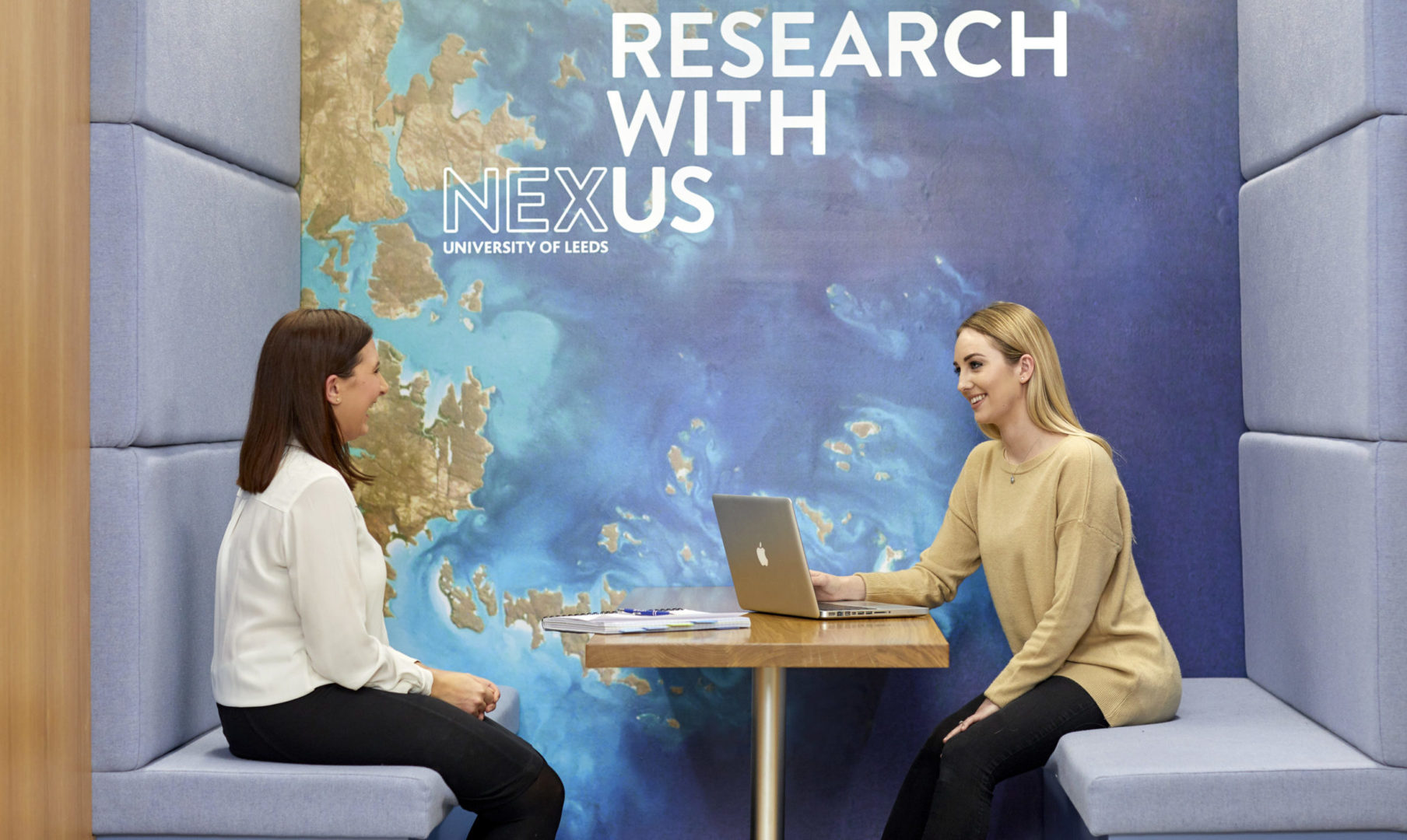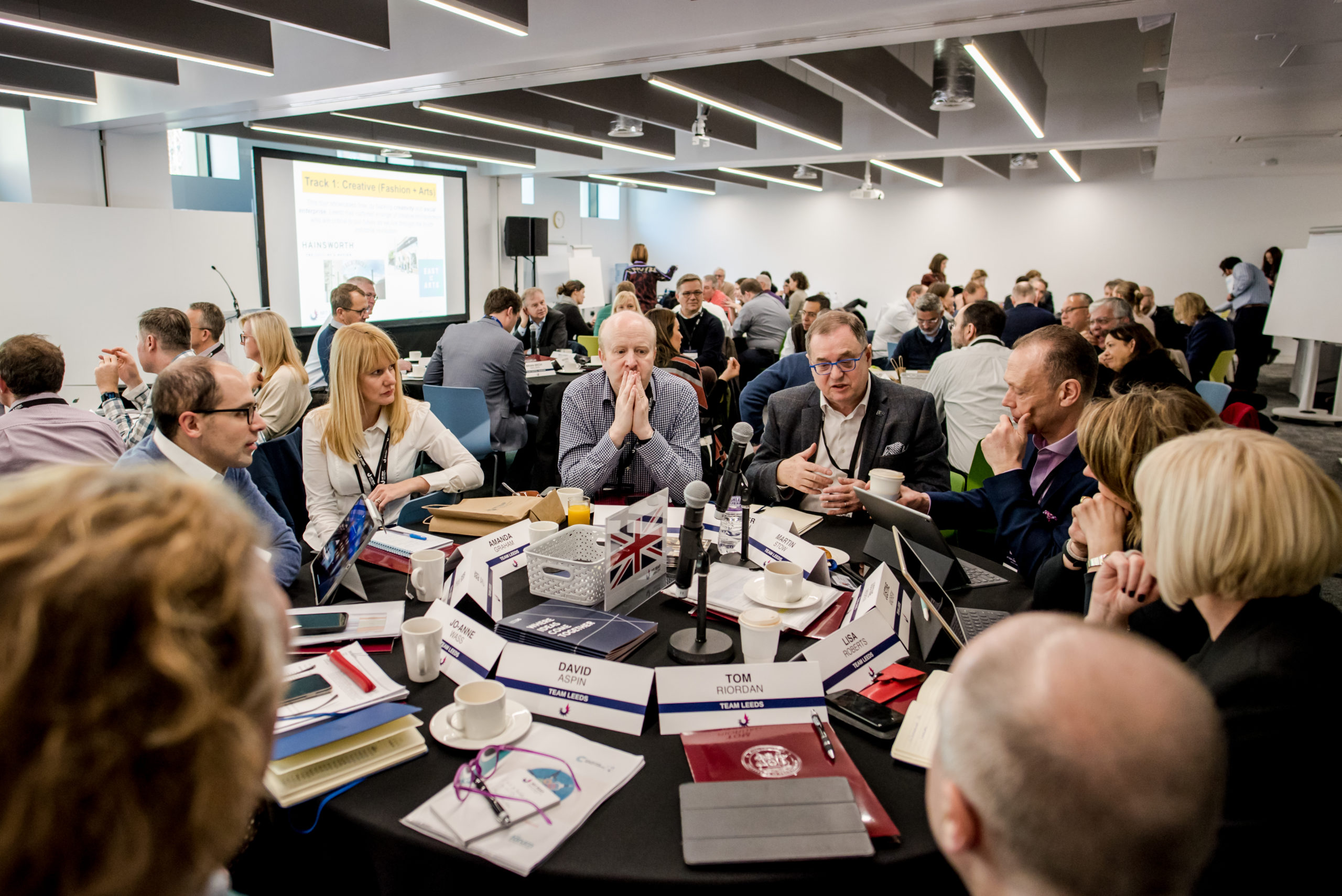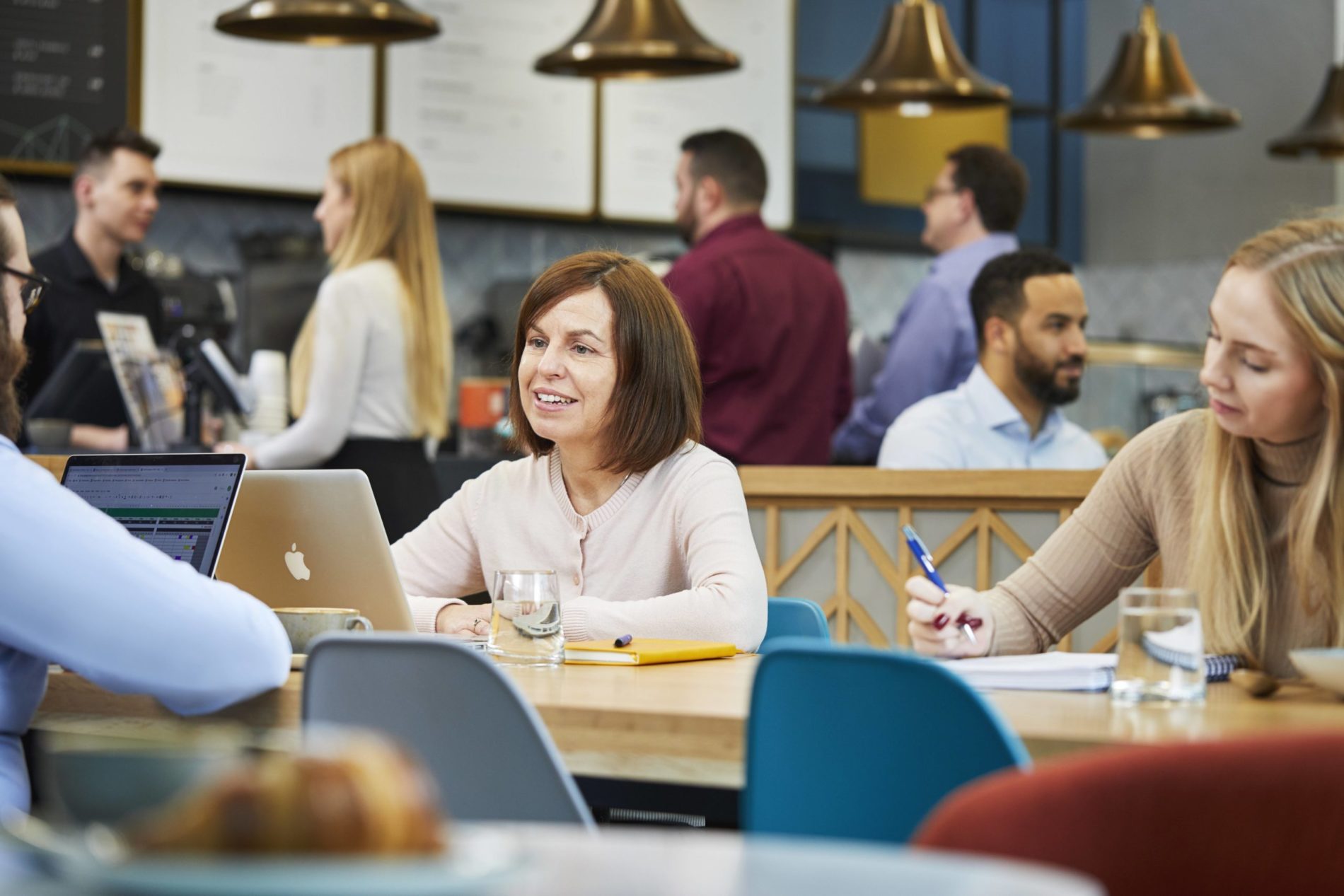
Key Findings
Discover emerging trends and insight from over 300 entrepreneurs and business leaders and find out what impact COVID-19 has had on their organisations and how they're planning for the future.
Key finding: Only 5% of businesses surveyed expect the majority of their staff to work entirely from a physical office/workspace post-COVID-19.
80% of businesses surveyed said that, pre-pandemic, the majority of their staff were either working entirely or mostly from an office/workplace away from home.
Post-COVID-19 the future of work looks set to be hybrid: only 30% of companies expect the majority of workers to work entirely or mostly from an office/workplace away from home, with 93% of businesses expecting the majority of workers to undertake work from both a physical office/workplace and from their home. The office clearly maintains an important role in a post-COVID-19 world.
26% of small firms (with less than 200 employees) plan for a majority of their staff to work mostly or entirely from home compared to 11% of medium-sized firms (with 200-499 employees) and 14% of large firms (with 500 or more employees). This is unsurprising given that property is the single largest contributor to costs for new businesses (2).
All sectors reported plans for a move to hybrid working models, however with some variation in the split between home and office working. For example, roughly one in five manufacturing businesses report an expectation that a majority of staff work entirely from an office or other workplace, but none of the 31 information and communication businesses reported this. These sectoral differences may arise due to different needs for different types of worker according to Kristi Woolsey at the Boston Consulting Group who says there are four main types of worker in our future world of work (3):
- Anchored operators: Anchored operators should have 0% to 20% remote work as they need to be physically present to do their jobs (e.g. scientist in a laboratory)
- Creative collaborators: Creative collaborators should have 20% to 50% remote work as they develop new initiatives (e.g. marketing executives launching a new campaign)
- Focused contributors: Focused contributors should have 50% to 80% remote work as their work requires an individual focus (e.g. a finance worker who closes the books every month)
- Pattern specialists: Pattern specialists should have 80% to 100% remote work as their work follows a regular process and a defined pattern (e.g. a call centre worker with a script).
These different types of worker could explain some of the sectoral variations observed. Information and communication businesses may contain a high proportion of pattern specialists for example, and manufacturing businesses may employ a significant proportion of anchor operators.
Overall, in a post-COVID-19 hybrid world, businesses still expect a slight bias towards office/workplace working compared to remote working in a typical week.
Key finding: The most commonly-cited motivation for adopting hybrid working practices is employee preference.
It is clear that employees are central to the shift to hybrid working. 80% of businesses highlighted employee preference as a motivation for moving to hybrid working. Employee desire for hybrid is something that the CBI has also heard from its membership with, for example, an SME manufacturer noting that “all staff who’ve been working from home have been asking for a hybrid approach”.
Not only do employees clearly desire the move to hybrid, but businesses also recognise that hybrid working has the potential to boost employees’ mental health and wellbeing via the flexibility it affords, with 62% of survey respondents citing mental health/wellbeing as a motivation. CBI member anecdote backs up this point, with a multinational recruitment and HR company citing the need to “look after our people” as a key reason for the change. Furthermore, businesses expect to be able to attract a wider range of employees by moving to hybrid, as well as becoming a more inclusive employer, with 61% and 60% of businesses citing these as motivations respectively.
Increased productivity is another significant driver, but with a smaller proportion of companies (46%) citing it as a motivation. Whilst this could be interpreted as businesses prioritising employee wellbeing over business efficiency, it is worth remembering that these two outcomes are inextricably linked as happier employees have been shown to be more motivated and therefore more productive (4). Access to a wider pool of talent is also associated with higher productivity, through better matching of workers to roles (5). A UK law firm and CBI member has told the CBI that, after announcing a ‘fully flexible’ policy, they quickly saw dividends from a productivity and talent attraction perspective, whilst a social housing provider said that a candidate turned down a senior role on account of a full work from the office policy.
Generally, motivations for the shift to hybrid were fairly consistent across firm sizes, with employee preference and wellbeing consistently cited. However, these motivations were strongest for larger firms with 92% of large businesses citing employee preference and roughly three quarters employee health and wellbeing, inclusivity and attracting employees from further afield. 75% of small firms highlighted employee preference, 58% mental health and wellbeing, and just over half inclusivity and attracting employees from further afield.
19% of small firms said they were motivated by client needs, compared to just 6% of medium-sized firms and 8% of large firms. This may be due to tighter margins for small firms, who may then choose to implement hybrid to create happier and therefore more productive workers.
There was some variation by sector, with 75% of construction firms citing employee wellbeing as a motivator, compared to 48% of professional, scientific, technical and administrative activities businesses.
Key finding: Business leaders expect to retain the balance of power when managing hybrid working.
Consistent with the fact that employee preference and wellbeing are prominent motivations for the shift to hybrid working, 58% of businesses surveyed expect employees to play a role in driving the management of flexible working more generally.
An even greater proportion of businesses (70%) expect management of flexible working to be directed by organisational policy, which suggests a number of structures which are top-down, but also with substantive employee engagement.
The CBI’s engagement with members indicates a variety of approaches planned by businesses, with most having a clear focus on employee inclusion. For example, a manufacturer reports a mandated 50/50 hybrid company policy, whilst a business in the technology sector wants to avoid a centrally-determined flexible working policy, asking leaders and managers in different business areas to consult with their teams instead. A smaller business in the survey included the comment “We’re a small business, it’s a conversation”.
Findings were very consistent across firm sizes, but with slightly more large firms citing the importance of organisational policy than smaller firms. In a sample of entrepreneurial firms, including early-stage firms and start-ups, 90% cited a drive from employees with only 20% specifying the importance of organisational policy, perhaps because formal policies may be less advanced in smaller firms.
Employees will be at the core of measures which companies intend to use to assess the success of hybrid working models. 86% of companies surveyed are planning to use employee satisfaction metrics to measure the success of hybrid working, with 78% planning to monitor productivity and 56% expecting to monitor how attractive they are to the employee market.
planning to measure employee satisfaction
planning to monitor productivity
planning to monitor how attractive they are to the employee market
Overall, the focus on employee wellbeing, productivity and hiring potential, closely mirrors the motivations for shifting to a hybrid model.
A focus on employees when assessing the success of hybrid working is also something that the CBI has observed through engagement with its membership. For example, as highlighted in the CBI’s hybrid working guide, the Centre for Process Innovation (CPI) plans to rely on data from its quarterly pulse survey to assess the extent to which a hybrid policy has a positive impact on employees. It will also monitor performance development reviews to determine whether there has been a change in overall employee performance, as well as its net promoter score for engagement to see how likely employees are to recommend CPI as a place to work.
This focus on employees has also been reflected in the type of support that businesses have accessed during the pandemic. 19% of businesses indicated that COVID-19 has led to a change in the type of support organisations accessed, with by far the most common specified change being an uptake of health and wellbeing support. Whilst COVID-19 accelerated this change, the use of these support services is likely to persist beyond the pandemic as businesses and employees better understand both the support available and the benefits to their organisation.
Key finding: Overall, remote working has been positive for productivity.
50% of businesses cited a positive impact of remote working on productivity, with only 21% citing a negative impact. Related to this, businesses generally found it easier to find time in a client or colleague’s diary when working remotely, perhaps due to freed up time from not having to commute or travel to meetings. Others found it easier to hold meetings with clients or colleagues situated in another region, nation or country. A logistics company and CBI member highlighted to the CBI their struggle to get staff into the office, emphasising a perceived loss of productivity as people return to commuting.
The observed impact of remote working on productivity is very similar across business sizes, but 23% of information and communication businesses surveyed observed a significant positive effect on productivity – the most of any sector – compared to only 3% of manufacturing and 4% of other service activities businesses. It appears that businesses that were most technologically efficient were able to most effectively reap the benefits that remote working provided.
Meanwhile, those dependent upon either the delivery of customer-facing services or on the use of on-site machinery were more likely to struggle to see a benefit from remote working.
Key finding: In contrast to the productivity boost, firms generally felt that remote/hybrid working negatively impacted their ability to be innovative.
said that remote working negatively impacted brainstorming
said that remote working negatively impacted "water cooler" moments
Importantly, the remote working productivity boost was reported to have come at a price, notably in terms of innovation and creativity. Just over half of firms judged that remote/hybrid working negatively impacted their ability to be innovative, with only 22% finding it easier. 70% of businesses said that remote working had negatively impacted brainstorming and 83% that it had negatively impacted those vital “water cooler” moments, when spontaneous ideas are shared and new relationships formed, which are fundamental to network expansion and business growth. Clearly the ability to interact physically with colleagues is felt to be an important enabler of creativity and innovation, a finding which was fairly consistent across business sizes and sectors.
Key finding: 61% of businesses said that it was harder to stay connected with colleagues when working remotely or in a hybrid model.
In addition to the challenges surrounding innovation, there were concerns about the ability to stay connected to, engage with and onboard colleagues remotely. 61% of businesses said that it was harder to stay connected to colleagues when working remotely or in a hybrid model. Businesses were also generally concerned about the ability to effectively line manage employees with half of firms considering line management to have been negatively affected.
There were mixed views on the impact of remote working on engagement with senior leadership, with 39% seeing a positive impact, and 35% seeing a negative impact.
It is worth noting that survey respondents are mostly senior employees themselves (e.g. CEOs, MDs or director/head of department) and therefore their views on how employees engaged with senior leadership may differ from other employees.
With regards to training, 42% of firms felt that remote working had a negative impact on learning and development and training opportunities. There was a lack of confidence in their ability to effectively onboard employees remotely, with 43% of companies ‘not very confident’ onboarding could be delivered to the same quality remotely as in person, and 14% ‘not at all confident’. A CBI member, and multinational recruitment and HR business, has told the CBI that they will ensure that new starters are in the office more going forward, to enable better on the job training and collaboration.
The impacts of remote working on connection, engagement with colleagues and on the onboarding of new staff were consistent across firm sizes and sectors, with businesses in the information and communication sector and the professional, scientific, technical and administrative activities sector experiencing more balanced impacts, perhaps due to having already invested more in relevant technologies.
Interestingly, large firms reported an overall positive impact on engagement with senior leadership under remote working. This may be because these firms experienced a lower baseline level of engagement with senior colleagues before the pandemic due to their large size, making any improvements that occurred during the pandemic seem more prominent.
Key finding: Collaboration was felt to have been negatively affected by remote working.
Closely linked to the above findings that remote working negatively impacted innovation and social connection, the survey also found a generally negative impact of remote working on collaboration across organisations, with half of firms feeling that it had been negatively affected, and only 29% viewing the impact as positive. This effect was similar across firm sizes and sectors.
However, views on the extent to which projects requiring collaboration could be delivered to the same quality remotely were more balanced with 41% of companies ‘somewhat confident’ and 10% ‘extremely confident’ that such projects could be delivered to the same quality remotely. This may be because businesses recognise that they will have to expend extra effort to deal with collaborative working challenges remotely but, at the same time, know that this extra effort will allow them to ultimately deliver projects to the required standard.
Key finding: 60% of businesses surveyed reported that maintaining client/partner relationships had been more difficult when working remotely.
Difficulties building and maintaining external relationships were also observed under remote working. Whilst businesses said that it was easier to hold meetings with clients and colleagues and to find time in diaries, they noted that overall client/partner relations were negatively affected by remote working.
Partnership working was mildly negatively affected with 40% observing a negative impact and 31% a positive impact. Meanwhile, a majority (55%) of businesses were not confident that new customer/client relationships could be formed to the same quality remotely.
Overall, the observed negative effect on partnerships and the maintenance of client relationships was fairly homogenous across firm sizes and sectors.
Key finding: 64% of businesses surveyed said that remote/hybrid working made it harder to expand their network.
Established networks were a little more resilient than less-established networks. 6% of businesses reported that they found it significantly harder to stay connected with colleagues – perhaps the most established network. This rose to 11% for staying connected with one’s general network, and further to 23% for expanding networks. This indicates a potentially greater impact on start-ups/entrepreneurs who are naturally trying to establish new networks.
Key finding: Office working will retain an essential role post-COVID-19 with two thirds of businesses expecting team building and strategy days to be conducted entirely from an office/workspace.
The mixed experience of remote working demonstrates that office/workplace and home working each have pros and cons. It is clear that physical workplaces will retain an essential role in the hybrid world beyond the pandemic, especially with regards to social interaction, innovation, and creative collaboration.
A significant proportion (67%) of businesses expect team building and strategy days to be conducted entirely from an office/workspace, with this being fairly consistent across firm sizes and sectors. In addition, only 4% of businesses expect to conduct onboarding and only 2% innovation planning entirely from home, with the remainder either expecting a combination of the home and the office, or solely the office.
Businesses continue to see the value of physical networks and communities. Above all, businesses value physical interaction as it enables more informal meetings, promotes collaboration and improves wellbeing. The CBI has heard this from members, with a large multinational telecommunications business indicating that its new offices are to be built around collaboration spaces due to physical environments being particularly conducive to collaboration, and a large supermarket chain indicating that they will need fewer desks and larger meeting spaces.
Key finding: The vast majority of activities carried out by workers are expected to be carried out both from home and from a physical office/workplace post-COVID-19.
Given that firms are widely adopting hybrid working models, it is no surprise to find that there are clear roles within that model for both the office/workspace and home working. Virtual working and engagement will play a vital role going forward, with most companies expecting the majority of activities to be undertaken primarily via a ‘combination of office and home’, with the exception of team-building and strategy days.
Three quarters of companies expect collaborative activities to be conducted through a combination of office and home, reflecting the productivity benefits of home working and the creativity-enhancing and relationship-building features of physical interaction. Similarly, for training, desk-based activities, client meetings, innovation planning and new project planning, most companies expect their staff to undertake these tasks split between the office and home.
Businesses value virtual networks for various reasons, including easy access to information and ease of staying connected to various stakeholders. Just as physical interaction is valued by employees in the workplace, virtual networking allows flexibility – highlighting why a hybrid model may be so beneficial for worker wellbeing.
Key finding: Businesses expect to travel less for meetings regionally, nationally and internationally.
The benefits of virtual networks are reflected in the fact that businesses plan to travel less for meetings in a hybrid world. Businesses feel similarly about regional (71% expecting to travel less), national (76% expecting to travel less) and international travel (61% expecting to travel less).
are expecting to travel less regionally
are expecting to travel less nationally
are expecting to travel less internationally
It is perhaps surprising that this effect isn’t stronger with respect to international travel. This may be because people tend to travel internationally for conferences or site visits, which are more difficult to replicate virtually, or perhaps because international travel has always been inherently more difficult and expensive, so the bar was always higher for it being justified. Delving further into these figures, 42% expect to travel significantly less for international meetings, with a similar figure for national meetings (41%), but a much smaller figure for regional meetings (26%). This is consistent with the idea that international travel will be limited to infrequent, yet important/essential visits.
There was some variation across different sectors, with a significant proportion of the education sector citing significantly less travel regionally (41%), nationally (52%) and internationally (55%) compared to a sector like construction, which may only travel when it is to some extent unavoidable, with a smaller proportion citing significantly less travel regionally (5%), nationally (28%) and internationally (33%).
Around three quarters of businesses expect to have hybrid working models in operation by the end of 2021.
Businesses are being proactive in preparing for the post-COVID-19 world, with regards to return to office and longer-term hybrid working plans. Around half of companies are currently implementing plans to return to the office and roughly a third are already implementing hybrid working plans, with a further 41% in initiation or analysis/planning stages. Three quarters of companies expect to have implemented longer-term hybrid working plans by the end of 2021. Only 6% of businesses reported that they still need to heavily invest in technology to facilitate hybrid working, with 42% having fully implemented the necessary technology.
Larger firms are particularly advanced with hybrid working plans. Only 4% of large firms have not yet started to make a plan, compared to 18% of smaller firms.
88% of businesses highlight at least one barrier to innovation.
88% of businesses highlighted at least one barrier to innovation, with lack of funding, lack of time, and lack of access to skills and talent most commonly cited as the biggest barriers. 40% of the entrepreneurial sample cited lack of funding as their top barrier.
Despite this, COVID-19 did accelerate investment in certain types of technology, with 52% of businesses increasing overall spending on IT. Unsurprisingly, the most common investment was in remote working technologies (76%). An article in The Economist explored how the pandemic has encouraged managers to place more trust in technology that allows workers to communicate and collaborate effectively even when out of the office, citing research that finds a big rise in the share of new patent filings for work-from-home technologies during the pandemic. (6,7)
References:
2. Lloyds Bank (2016) Average cost of starting a new business is over £12,000.
3. Emma Jacobs (2021) The new frontiers of hybrid work take shape. Financial Times. 21st April.
4. Andrew J. Oswald, Eugenio Proto, and Daniel Sgroi (2021) Happiness and Productivity | Journal of Labor Economics: Vol 33, No 4
5. Andersson, F., Burgess, S., & Lane, J. I. (2007). Cities, matching and the productivity gains of agglomeration. Journal of Urban Economics, 61(1), 112-128.
6. The Economist (April 2021), “The rise of working from home”.
7. Bloom, Nicholas and Davis, Steven J. and Zhestkova, Yulia (2021) “COVID-19 Shifted Patent Applications Toward Technologies that Support Working from Home”. University of Chicago, Becker Friedman Institute for Economics Working Paper No. 2020-133.
Explore the key challenges and proposed solutions for the challenges to businesses are facing as a result of the COVID-19 pandemic.















